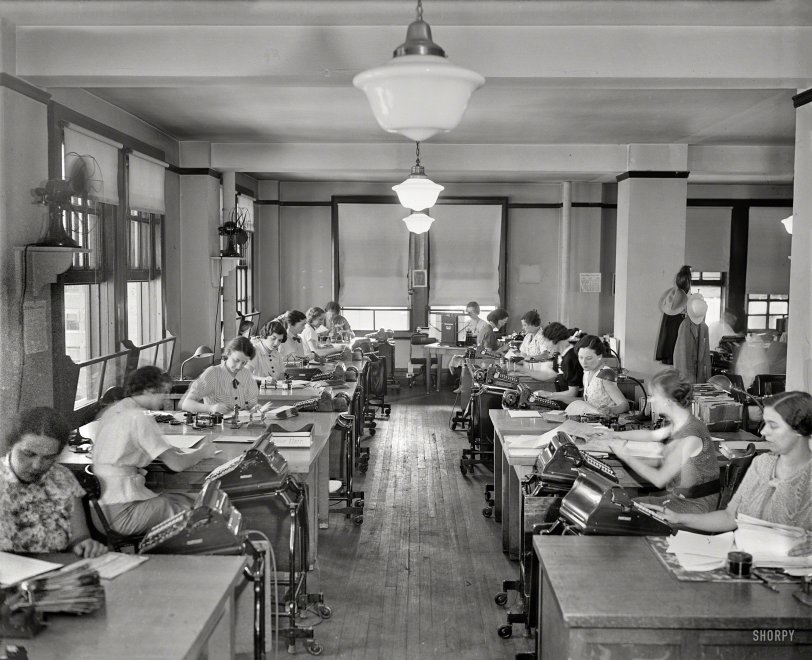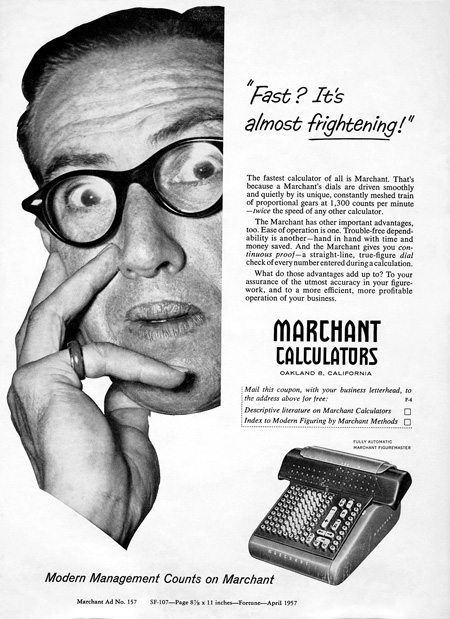


Framed or unframed, desk size to sofa size, printed by us in Arizona and Alabama since 2007. Explore now.
Shorpy is funded by you. Patreon contributors get an ad-free experience.
Learn more.

- Baldwin 62303
- Baldwin VO-1000
- Cold
- No expense spared
- Tough Guys
- Lost in Toyland
- And without gloves
- If I were a blindfolded time traveler
- Smoke Consumer Also Cooks
- Oh that stove!
- Possibly still there?
- What?!?
- $100 Reward
- Freeze Frame
- Texas Flyer wanted
- Just a Year Too Soon
- WWII -- Replacing men with women at the railroad crossing.
- Yes, Icing
- You kids drive me nuts!
- NOT An Easy Job
- I wonder
- Just add window boxes
- Icing Platform?
- Indiana Harbor Belt abides
- Freezing haze
- Corrections (for those who care)
- C&NW at Nelson
- Fallen Flags
- A dangerous job made worse
- Water Stop
Print Emporium
Tabulatrices: 1935

Washington, D.C., circa 1935. "Office workers." A future diorama in the National Secretarial Museum. Harris & Ewing Collection glass negative. View full size.
Re: "Missing feature"
There are two "ghost men" who fit your description of the stern men watching the women work in the upper right hand corner of the pic. Their coats and hats hanging on the hooks were my first clue.
Lotsa Pieces
Richard Hamming (who worked with Feynman) told a story about a computer (as the ladies were called back then) whose Marchant jammed and started to squeal and smoke. She threw it out the window. A second story window.
Marchant merchandising
In 1957 my Uncle Albert, a vice-president of the Foote, Cone & Belding advertising agency, put himself into an ad for their client.

Bon mot!
A picture may well be worth a thousand words, but occasionally, a single word will free the remaining nine hundred ninety-nine to find other employment.
Must be the accounting department.
I believe those are adding machines beside each desk. They're probably working on spreadsheets.
Marchant calculators!
As used a few years later in your finer atomic-bomb research laboratories to crunch numbers and invent reduced instruction set computing (RISC).
Richard Feynman, in "Los Alamos From Below":
"In this particular case, we worked out all the numerical steps that the [IBM] machines were supposed to do - multiply this, and then do this, and subtract that. Then we worked out the program, but we didn't have any machine to test it on. So we set up this room with girls in it. Each one had a Marchant. But she was the multiplier, and she was the adder, and this one cubed, and we had index cards, and all she did was cube this number and send it to the next one. We went through our cycle this way until we got all the bugs out. Well, it turned out that the speed at which we were able to do it was a hell of a lot faster than the other way, where every single person did all the steps. We got speed with this system that was the predicted speed for the IBM machine. The only difference is that the IBM machines didn't get tired and could work three shifts. But the girls got tired after a while."
























On Shorpy:
Today’s Top 5